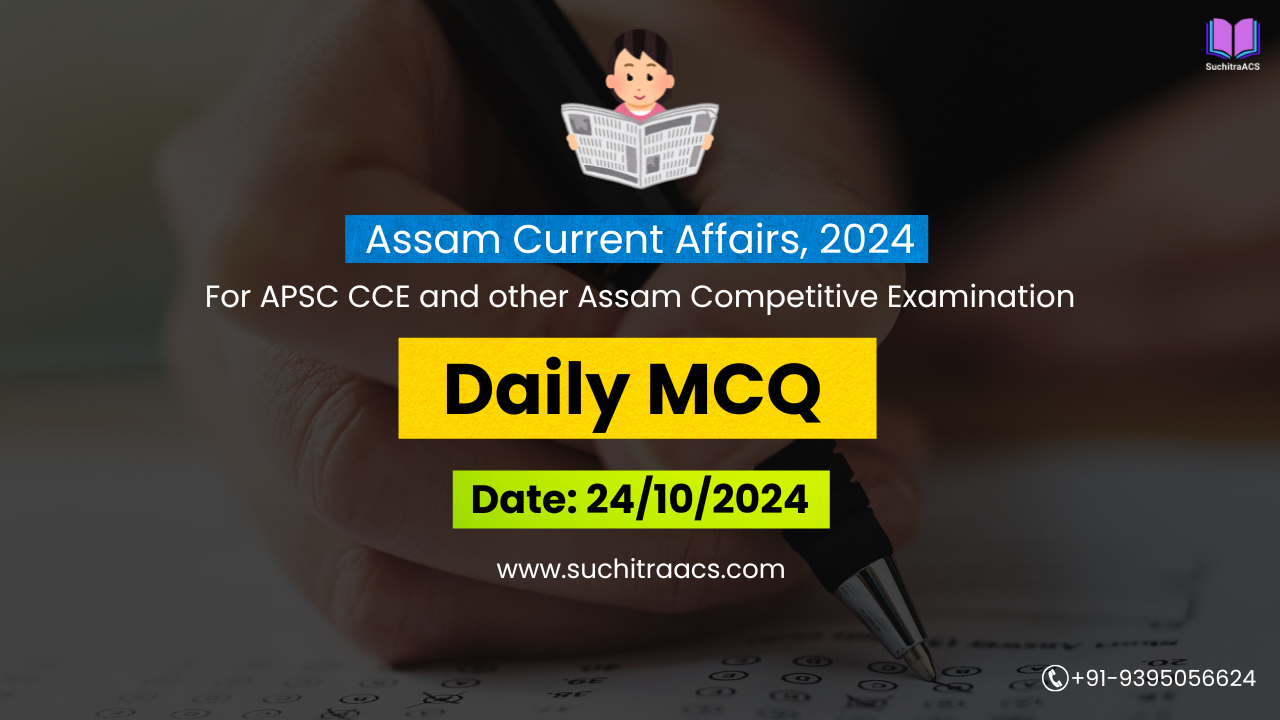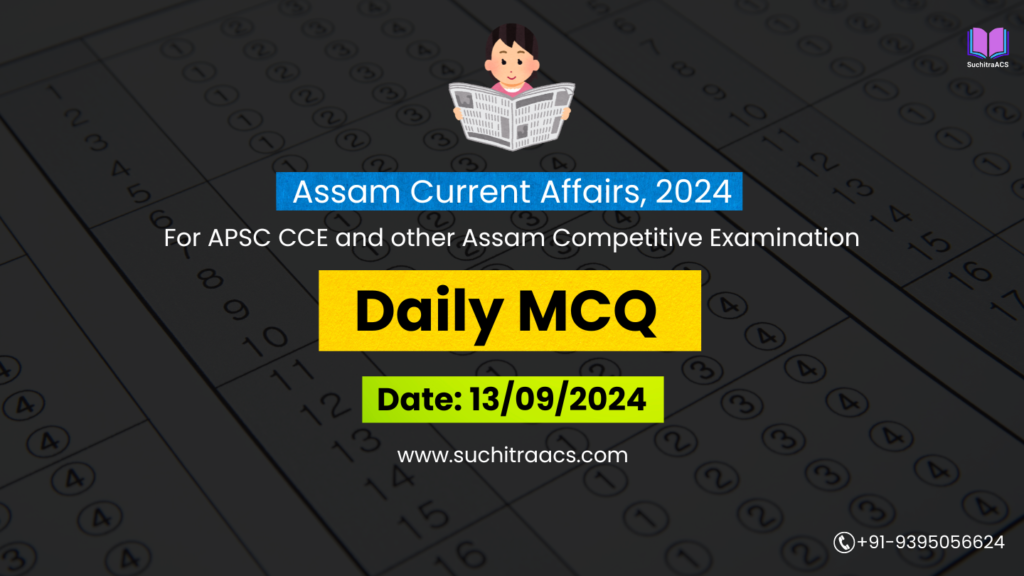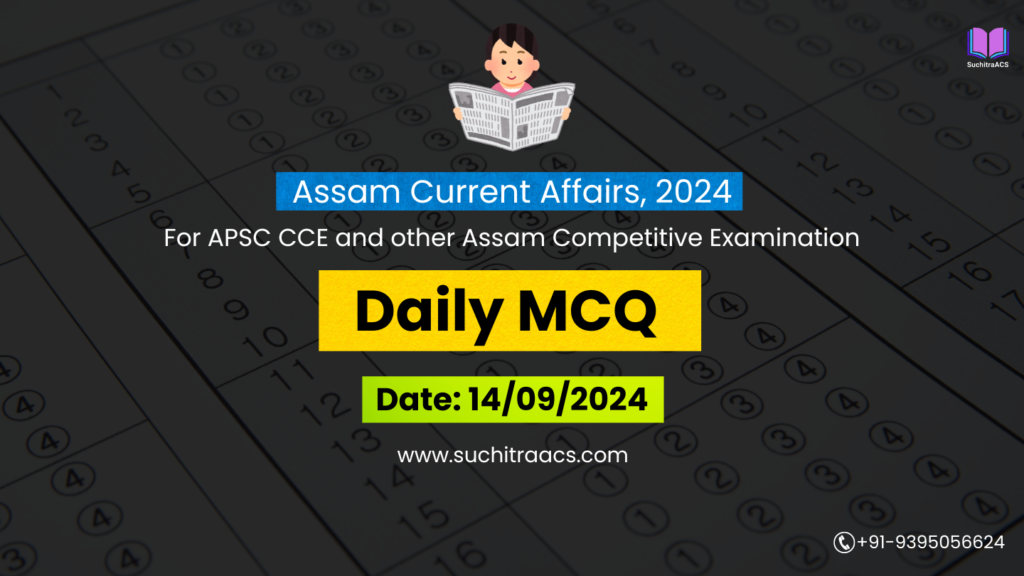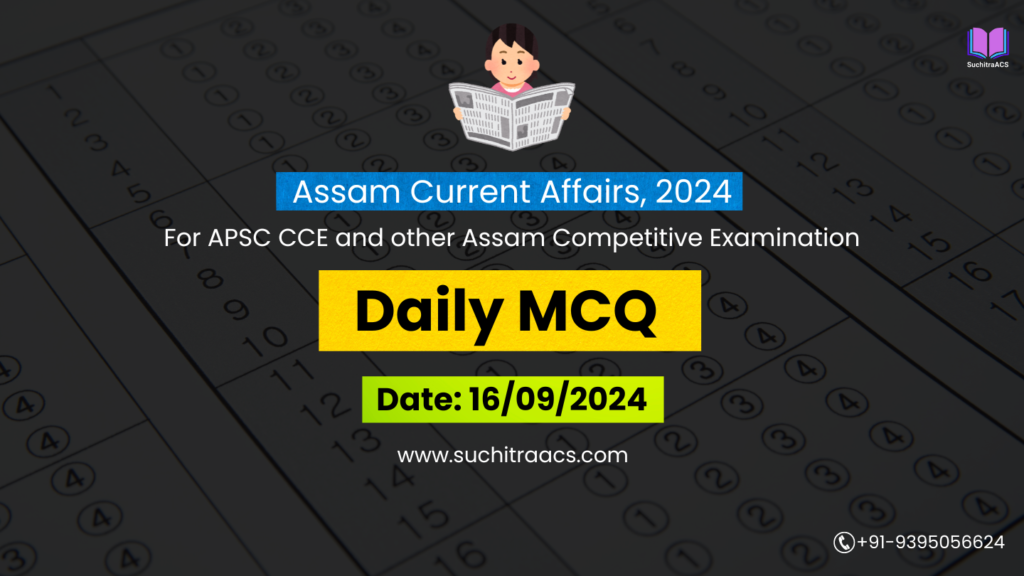APSC MCQs / APSC Prelims Practice Questions based on Assam Tribune (Daily) – 24/10/2024
For APSC CCE and other Assam Competitive examinations aspirants, practicing Daily MCQs is vital. This blog covers most important Prelims questions from the Assam Tribune today (24-10-2024). These issues are key for both APSC Prelims syllabus, offering insights into the important topics of current affairs.
APSC MCQs / APSC Prelims Practice Questions (Date: 24/10/2024)
Question 1: Which of the following countries are new members of the BRICS group as of the 16th BRICS Summit?
- Egypt
- Iran
- Saudi Arabia
- Indonesia
- Ethiopia
- UAE
Select the correct answer using the code given below:
A. 1, 2, 3, 5, and 6 only
B. 2, 3, 4, 5, and 6 only
C. 1, 3, 4, 5, and 6 only
D. 1, 2, 4, 5, and 6 only
Answer: A. 1, 2, 3, 5, and 6 only
Explanation:
At the 16th BRICS Summit in Kazan, Russia, BRICS expanded its membership to include Egypt, Iran, Saudi Arabia, Ethiopia, and the UAE. Indonesia is not a part of the BRICS group, making option A the correct answer.
Question 2: Which of the following factors have contributed to the improved conviction rate in Assam from 2021 to 2024?
- Filling vacancies in key positions like ASP/DSP
- Adoption of best practices from federal investigative agencies
- Increased focus on resolving pending cases
- Higher rates of recruitment into the Indian Police Service (IPS)
Select the correct answer using the code given below:
A. 1 and 2 only
B. 1, 2, and 3 only
C. 2, 3, and 4 only
D. 1, 3, and 4 only
Answer: B. 1, 2, and 3 only
Explanation:
The improvement in Assam’s conviction rate is attributed to several measures, including filling vacancies in key law enforcement positions (ASP/DSP), adopting best practices from federal agencies like the CBI and NIA, and focusing on the disposal of pending cases. While recruitment into the IPS is beneficial, it was not specifically highlighted as a key factor in the recent improvement in conviction rates. Thus, option B is correct.
Question 3: Consider the following statements regarding the Environment Protection Act, 1986:
- It provides the legal framework for regulating pollution and protecting environmental quality in India.
- Recent amendments to Section 15(c) have strengthened the enforcement mechanisms for violations.
- The Act was enacted under Article 21 of the Indian Constitution.
Which of the statements given above is/are correct?
A. 1 only
B. 1 and 2 only
C. 2 and 3 only
D. 1 and 3 only
Answer: A. 1 only
Explanation:
The Environment Protection Act, 1986, provides the legal framework for regulating pollution and protecting the environment in India, making Statement 1 correct. However, recent amendments to Section 15(c) have been criticized for diluting the enforcement mechanisms rather than strengthening them, making Statement 2 incorrect. The Act is not directly enacted under Article 21, although Article 21 guarantees the right to a clean environment as a part of the right to life. Thus, Statement 3 is incorrect, making option A correct.
Question 4: Which of the following is a primary objective of Assam Industrial Infrastructure Development Corporation (AIIDC) in offering long-term leases for industrial sheds?
A. Encouraging foreign direct investment in Assam’s tourism sector
B. Promoting small and medium enterprises (SMEs) in manufacturing and agro-processing
C. Developing luxury residential complexes in urban areas
D. Boosting the IT industry in Assam by establishing technology parks
Answer: B. Promoting small and medium enterprises (SMEs) in manufacturing and agro-processing
Explanation:
The AIIDC’s initiative to lease industrial sheds is aimed at fostering local industrial growth by promoting SMEs, especially in sectors like manufacturing and agro-processing. This is part of Assam’s broader strategy for economic development and job creation. Options A, C, and D do not align with the primary objective of the AIIDC’s recent bid announcement, making option B correct.
Question 5: Which of the following is true regarding the Supreme Court’s recent observations on environmental protection?
- It emphasized the fundamental right to a pollution-free environment under Article 21.
- It lauded the amendments to the Environment Protection Act for stricter enforcement of penalties.
- It urged the central government to expedite the appointment of adjudicating officers for effective enforcement.
Select the correct answer using the code given below:
A. 1 and 2 only
B. 2 and 3 only
C. 1 and 3 only
D. 1, 2, and 3
Answer: C. 1 and 3 only
Explanation:
The Supreme Court emphasized that the right to a clean environment is part of the fundamental right to life under Article 21, making Statement 1 correct. It criticized, rather than praised, the recent amendments to the Environment Protection Act, pointing out that they had made enforcement “toothless,” making Statement 2 incorrect. The court also called for the speedy appointment of adjudicating officers to ensure proper enforcement of environmental regulations, making Statement 3 correct. Thus, option C is the right answer.
✨ Looking for top-quality APSC online coaching at an affordable price?

🔔 Join Our WhatsApp Study Group!
For exclusive access to premium quality content, including study materials, current affairs, MCQs, and model answers for APSC CCE and other Assam competitive exams.
Click here to join: SuchitraACS Study WhatsApp Group
📚 Want to know more about SuchitraACS’s most affordable courses?
Click here to know more: SuchitraACS Courses for APSC CCE and Assam Competitive Examinations




